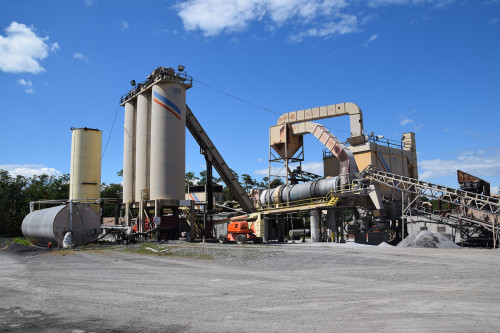Boost Property Value and Functionality with Hot Mix Asphalt Paving Services
Boost Property Value and Functionality with Hot Mix Asphalt Paving Services
Blog Article
Unlocking the Secrets of Hot Mix Asphalt Technology
Checking out the depths of hot mix asphalt innovation discovers a world where precise formulations and precise processes converge to form our roadways and infrastructure. The combination of fillers, accumulations, and binders isn't simply a building task but a critical orchestration of sturdiness and efficiency. As we peer into the intricate dancing of parts, a tapestry of strength and sustainability unfolds. What exists beneath this surface area of asphaltic mastery, and what secrets wait to be introduced in the realm of paving technologies?
Value of Hot Mix Asphalt
Hot Mix Asphalt plays a vital duty in modern framework advancement due to its toughness and cost-effectiveness. As the most commonly used leading product for roadways, highways, and vehicle parking great deals, Hot Mix Asphalt supplies an array of advantages that contribute to its relevance in building projects.
The durability of Hot Mix Asphalt stems from its composition, which consists of aggregates, binder, and filler products that are carefully picked and mixed to meet details efficiency requirements. In general, the value of Hot Mix Asphalt in infrastructure growth can not be underrated, as it continues to be a keystone of modern-day construction methods.
Components of Asphalt Mixes
The make-up of asphalt mixes is composed of thoroughly selected accumulations, binder, and filler materials that are crucial for attaining details efficiency requirements. Accumulations are the key part of asphalt mixes, giving stamina and security. The binder, generally asphalt or asphalt cement, holds the accumulations with each other and provides flexibility and resilience to the mix.
The mix and proportion of these elements play a substantial function in identifying the quality and performance of the asphalt mix. Engineers thoroughly design the mix to fulfill certain demands, taking into consideration variables like website traffic volume, environment conditions, and sidewalk life expectancy. Correct choice and balancing of aggregates, binder, and fillers are important for developing sturdy, lasting asphalt pavements.
Mixing and Production Strategies

When the accumulations are picked, the binder, typically asphalt cement, is contributed to bind the materials together. The binder's quality and quantity significantly influence the mix's resistance, flexibility, and toughness to environmental variables. In addition, fillers like hydrated lime or Portland concrete might be included to improve certain attributes of the asphalt mix, such as its workability or moisture resistance.
Throughout manufacturing, the accumulations and binder are warmed, usually in between 250-325 ° F(121-163 ° C ), to help with mixing and make sure correct finishing of the aggregates. The blending procedure must be complete to achieve an uniform combination that advertises the desired performance qualities of the asphalt. Various strategies, such as batch mixing or drum mixing, are used to attain premium and consistent asphalt mixes for construction tasks.
Aspects Impacting Asphalt Performance
Variables affecting asphalt performance incorporate a variety of variables that affect the durability, durability, and overall high quality of asphalt pavements. One key element is the high quality of materials utilized in the asphalt mix. The kind and source of aggregates, the binder high quality, and the ingredients all play a considerable role in identifying the efficiency of the asphalt sidewalk. The rank of aggregates is important as it influences the mix's resistance, workability, and security to breaking straight from the source and rutting.

Ecological conditions likewise affect asphalt performance. Temperature level variations, moisture seepage, and web traffic tons can all affect the structural stability of the sidewalk. Design factors to consider, such as sidewalk thickness and drainage, are important in making sure the long-term efficiency of the asphalt pavement. By carefully thinking about these specialists, aspects and engineers can enhance asphalt performance and boost the life span of pavements.
Lasting Practices in Asphalt Innovation
Additionally, the development of warm-mix asphalt (WMA) modern technologies has acquired traction in current years. WMA allows for the manufacturing and positioning of asphalt mixes at lower temperatures contrasted to conventional hot-mix asphalt, causing minimized energy usage and greenhouse gas discharges. The usage of permeable asphalt mixes can aid mitigate stormwater runoff concerns by enabling water to penetrate via the pavement and right into the ground, advertising all-natural water filtering and reenergize processes. By executing these lasting methods, the asphalt industry can add to developing an extra eco-friendly and resistant infrastructure network.
Conclusion
Finally, hot mix asphalt technology plays an important duty in modern-day facilities development because of its durability and commercial parking lot paving cost-effectiveness. By carefully balancing components, utilizing appropriate mixing techniques, and taking into consideration different elements, engineers can create top notch asphalt blends that endure rush hour lots and harsh weather problems. Welcoming sustainable methods, such as using warm-mix innovations and recycled materials, even more boosts the ecological friendliness of asphalt technology.
Blending and production techniques in warm mix asphalt technology include the precise mix and handling of aggregates, binder, and fillers to create a sturdy and high-performance asphalt mix.Factors affecting asphalt efficiency include an array of variables that influence the durability, longevity, and total quality of asphalt pavements. Sustainable techniques in asphalt modern technology include various efforts aimed at lowering the environmental influence of asphalt manufacturing and paving processes. By integrating recovered asphalt pavement (RAP) and recycled asphalt roof shingles (RAS) into new asphalt blends, the industry can substantially minimize the usage of raw products and energy, while likewise lowering landfill waste.
WMA permits for the production and placement of asphalt mixes at lower temperatures contrasted to conventional hot-mix asphalt, resulting in lowered power consumption and greenhouse gas emissions.
Report this page